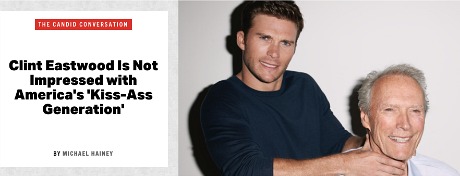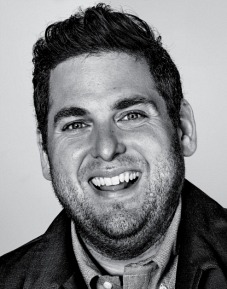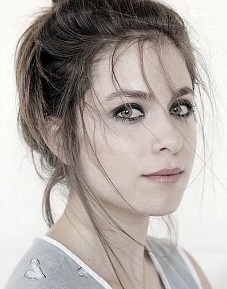“Despite not being a particularly gory effort but rather a Polanski-esque film, Marcin Wrona‘s Demon (The Orchard, 9.9) shows how much Polish cinema is incomplete due to its chronic lack of solid horror productions. We truly hope that the domestic yellow press and Wrona’s aficionados alike will appreciate Demon avoiding any speculation about the causes of his suicide.” — from an 11.5.15 Krakow Post review by Giuseppe Sedia. Wrona, 42, hanged himself during the Gdynia Film Festival, on 9.19.15.
 Jeffrey Wells
Jeffrey Wells
I Love Ya, Old Buddy. Now Kill My Career.
A documentary about the late Hal Needham, the stuntman-turned-director who helped to cheapen, devalue and all but assassinate Burt Reynolds‘ career as a top-of-the-heap superstar, is airing tonight on CMT at 7 pm Pacific/10 pm Eastern, and then again tomorrow afternoon around 1 pm or thereabouts. Jesse Moss‘ The Bandit, which screened at SXSW and two or three other festivals earlier this year, is about the perplexing friendship between Reynolds and Needham.
Reynolds’ Achilles heel was his loyalty to Needham, a pal since the ’50s and a one-time roommate. His decision to star in a string of atrocious (if financially bountiful) Needham-directed drive-in flicks from the mid ’70s to mid ’80s cast a shitkicker pall over Reynolds’ image. It wasn’t all Needham’s fault, granted, but by ’85 or ’86 Reynolds’ heyday had come to an end.
From my 2013 Needham obituary: “What killed Burt Reynolds‘ career as a hot-shit movie star? His decision to star in a string of lowbrow shitkicker films, most of which were directed by his buddy Hal Needham, who started out in the mid ’50s as a stuntman.
“Under Needham’s Lubistch-like guidance Reynolds starred in Smokey and the Bandit (’77), Hooper (’78), Smokey and the Bandit 2, The Cannonball Run (’81), Stroker Ace (’83) and The Cannonball Run II (’84).
“It’s generally understood that Reynolds stabbed his career in the heart when he turned down the astronaut role in James L. Brooks‘ Terms of Endearment in order to make Stroker Ace, allegedly out of loyalty to Needham.
Weeks Later, Zellweger Lays It Down
Yesterday Renee Zellweger posted a Huffpost essay about the media-storm response to Owen Gleiberman’s 6.30.16 Variety piece…blah blah here we go again. You know, the one that riffed on the obvious fact that the Zellweger of yore — the actress who costarred in Jerry Maguire, Bridget Jones Diary and Cold Mountain — is no more. Not looking older or attractively seasoned but “somehow upgraded,” as I put it on 7.3.
Zellweger’s piece (“We Can Do Better“) isn’t a tit-for-tat response to Gleiberman’s, although that would have been interesting. And why she waited four or five weeks to finally jump in is a head-scratcher. Laziness? Did her publicist suggest that speaking her piece two or three weeks before the press junket for Bridget Jones Baby (Universal, 9.16) will give her something to point to when the inevitable smarmy questions are asked?
Zellweger’s main beef seems to be that mainstream media types are lowering the bar when they discuss anyone’s physical evolution or strategic enhancement. She understands that supermarket tabloid coverage will always be cruel and tacky, but feels that grade-A types like Gleiberman should steer clear. “The ‘eye surgery’ tabloid story itself did not matter,” she states, “but it became the catalyst for my inclusion in subsequent legitimate news stories about self-acceptance and women succumbing to social pressure to look and age a certain way. In my opinion, that tabloid speculations become the subject of mainstream news reporting does matter.”
Well, yeah, agreed. Except when you’ve had work done that screams “WORK!” louder than Maynard G. Krebs.
Creepiest Beatles Song Ever?
An angry, self-admitted “wicked” guy pretty much telling his girlfriend that if she cheats he’ll kill her. “Run For Your Life” could be O.J. Simpson‘s 1994 theme song. And yet it’s right from the heart of an angry, early-era John Lennon. The Rolling Stones were sometimes accused of penning misogynist tunes in the late ’60s and ’70s, but “Run For Your Life” is more woman-denigrating than anything Mick Jagger or Keith Richards composed. It has to be one the ugliest rock songs ever, right up there with Phil Spector‘s “He Hit Me (And It Felt Like A Kiss).”
“My Name’s Wilson”
While I’ve seen Steven Soderbergh‘s The Limey (’99) ten or twelve times, I’ve never once seen Ken Loach‘s Poor Cow (’67). Which I should have by now. Both films star Terrence Stamp (whom I chatted with a bit in Toronto when The Limey had its big premiere in ’99) as a criminal type — the 60ish Wilson in The Limey, 20something Dave in Poor Cow. Soderbergh used clips from Poor Cow to suggest what Wilson’s life was like when he was young with a daughter, etc. I just bought a Poor Cow Bluray on Amazon.co.uk. I tried to stream a rental but British Amazon only allows people with British bank cards to do this.

Cut Clint A Break?
Five hours ago HE pally Lewis Beale posted a Clint Eastwood defense on Facebook. Beale alludes to Eastwood’s remarks in Michael Hainey’s just-posted Esquire interview that has everyone calling him a rightwing dick who doesn’t respect p.c. guidelines, a clueless dinosaur and/or a real-deal incarnation of Walt Kowalski, the seething cranky guy he played in Gran Torino.

Understand before you read Beale’s essay that Eastwood doesn’t defend Donald Trump all around the block in the Esquire piece. Clint acknowledges that Trump has said some stupid things, although he seems to have a certain sympathy for Trump’s ongoing disdain of the p.c. dictatorship: .
“I know the p.c. crowd will be all over me for this,” Beale begins, “but the recent posts regarding Clint Eastwood’s defense of Donald Trump’s racist comments deserve some context. Human beings are complex creatures, which means that Eastwood is a set of contradictions. His defense of Trump is no doubt reprehensible, but in excoriating him a lot of people have forgotten that for years Eastwood has, in his own way, been one of the most racially sensitive people in Hollywood.
“Years ago a friend [reminded] me that Woody Allen, darling of film critics and urban intellectuals, never cast any minorities in his films, even as background. Yet Clint Eastwood, often reviled for his conservative/libertarian politics, has consistently cast, and acted with, black performers, many of them in key roles. I wrote a piece about this for the Los Angeles Daily News, and to this date no one has contradicted my findings.
Jonah Hill Reflected By Molly Young
This morning I flew through a deliciously written N.Y. Times Magazine profile of War Dogs star Jonah Hill (“Jonah Hill Is No Joke“). I’ve met Hill three or four times and regard him as one of “HE’s own,” and it’s my humble opinion that Young, a 20something, has captured him well and fairly. Young is obviously sharp and attuned and knows how to sculpt sentences like a samurai.


(l.) War Dogs star and N.Y. Times Magazine object-of-scrutiny Jonah Hill (r.) Times profiler Molly Young.
I’ve pasted some excerpts but first consider Young’s assessment of War Dogs (Warner Bros., 8.19), which opens in two weeks and which no one I know has seen yet:
“Nobody has bulletproof judgment,” Young begins — that in itself tells you everything. Then she says that Hill’s portrayal of real-life arms dealer Efraim Diveroli “could be seen as a terrific character in an otherwise okay movie. It’s not that War Dogs isn’t funny; and it’s not as if [director] Todd Phillips has made a buddy-cop comedy about Ferguson, but it is an Iraq War movie made by the director of The Hangover. There are strippers and an underwritten supportive-girlfriend role and Bradley Cooper.”
If Hill had been profiled by Vanity Fair, no way would they have allowed their writer to describe War Dogs as “okay,” let alone damn with faint praise with the Ferguson analogy. No way. This is the difference between a serious writer filing for a publication with a semblance of integrity and a once-respected, kiss-ass monthly.
Young/Hill excerpt #1: “The hilarious-sidekick roles make up a numerically small but neon-bright portion of Hill’s career, and no number of contrasting performances — in indie comedies directed by the Duplass brothers, in Oscar-nominated dramas like Moneyball — can seem to override the public impression of him as a man who might, at any moment, start humping the furniture.”
Young/Hill excerpt #2: “If Superbad cemented Hill’s status as an entertaining accent piece, Moneyball suggested that pegging him as a novelty actor was an error. His character in that movie, an economics geek named Peter Brand, is an introvert who walks the earth as if he’s about to be pantsed. He underplays the part so deftly that Brand’s emotional climax — when he sees that his methods actually work — is conveyed by no more than a few euphoric seconds of rapid blinking and a half-smile.”
Now That’s The Salty-Tongued, Cigar-Chomping “Ma” Clinton I Approve Of
In an 8.5 N.Y. Times op-ed piece titled “I Ran the C.I.A. — Now I’m Endorsing Hillary Clinton,” Michael J. Morell states unequivocally that Donald Trump is too whimsical and nutty to be President and that Hillary Clinton is far and away the more responsible choice.
Halfway through the article Morell notes that he “never saw [Clinton] bring politics into the Situation Room. In fact, I saw the opposite. When some wanted to delay the Bin Laden raid by one day because the White House Correspondents Dinner might be disrupted, she said, ‘Screw the White House Correspondents Dinner.'”
This morning ABC political correspondent Kristen Soltis Anderson tweeted that Morell’s anecdote originated in “This Town,” a 2013 inside-Washington book by N.Y. Times Magazine correspondent Mark Leibovitch, and that Clinton actually said “fuck the Washington Correspondents Dinner.”
Morell is a former deputy director of the Central Intelligence Agency who twice served as acting director in 2011 and also from 2012 to 2013. Apart from her on-air ABC commentaries, Anderson, 32, is a Republican pollster and writer.
Knuckle-Draggers to Warner Bros.: Make More Shitty D.C. Comics Flicks That Critics Hate…Please!
Once again the D.C. Comics bad guys at Warner Bros. have won, and the cultural pollution continues. The $20.5 million earned last night by Suicide Squad — the third-largest preview haul for a DC flick after The Dark Knight Rises‘ $30.6 million and the $27.7 million pulled down by Batman v Superman: Dawn of Justice — will translate into earnings of more than $120 million by Sunday night.
I’m not calling this the box-office equivalent of Donald Trump being elected president next November, but it’s clearly a similar dystopian scenario — another successful attempt by a very cynical and (to go by industry chit-chat) close-to-clueless team of studio executives, once again persuading the masses to stampede into plexes to see a film that most critics are calling bad, bad, bad.
Because right now they don’t care about alleged quality or lack of. They may hate it just as much as the critics by Sunday night, but right now they want to slosh around in yet another CG mud pit and revel in the anti-authoritarian swagger and buddy up with Will Smith, Jared Leto and Margot Robbie. Thank you, ticket-buyers, for strengthening the hand of Hollywood’s Vader-like comic-book mongers.
Marvin J. Chomsky’s Tank
For decades I’d read about huge water tanks being used for the parting-of-the-Red Sea sequence in The Ten Commandments (’56), but due to laziness or what-have-you I’d never seen raw footage of these tanks, built and used on the Paramount lot, until today. Ignore the Egyptian location footage (shot in October 1954) that occupies for first 3 minutes and 50 seconds. The Paramount tank footage begins at 3:52 and goes until 5:26. Posted on 5.19.11 by Steven Willhite.
Sidenote: Nobody in the front lines of Hollywood movie journalism posts this kind of stuff except me. Right now they’re all jibber-jabbering about the $20.5 million earned last night by Suicide Squad. Only Hollywood Elsewhere dares to stand up in the face of the latest idiot lemming stampede and say, “Wait…what about the engineering and the shooting of the Red Sea sequence near the corner of Melrose and Bronson 61 years ago?”
Defeated, Surrounded
I was under the impression that the 1940 Dunkirk evacuation (5.26 to 6.4) was an unruly, somewhat chaotic thing. As any evacuation under duress would be. I never imagined that the defeated British troops, anxious and scared, would stand so still and quietly, and that all of that windblown sand would look so captivating. But Chris Nolan, director-writer of Dunkirk (Warner Bros., 7.21.17), has. No matter — the chilling sequence at the end (the 31-second to the 46-second mark) makes it all worth it.
“Your Revolution is Over, Lebowski! Condolences! The Bums Lost!”
Blustery character actor David Huddleston, whose career peaked with his performance as testy Republican philanthropist Jeffrey Lebowski in Joel and Ethan Coen‘s The Big Lebowski (’98), died two days ago at the age of 85. Huddleston’s career began around ’70 or thereabouts. He acted in many films and TV shows, but I honestly don’t remember any stand-outs except for the Lebowski thing. Sorry.
